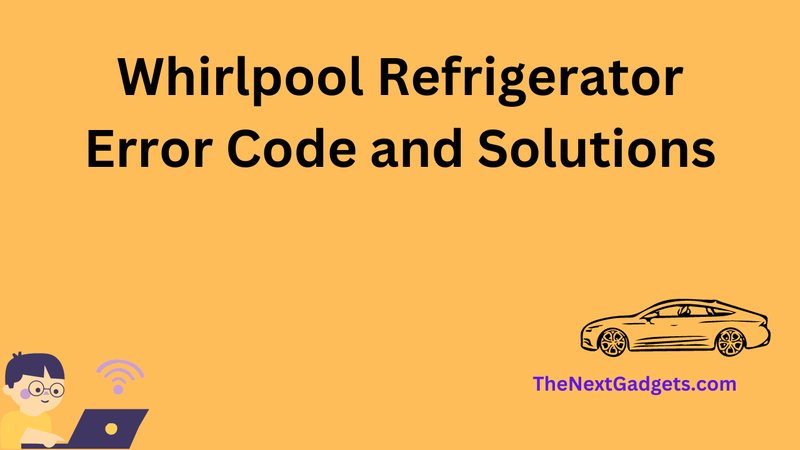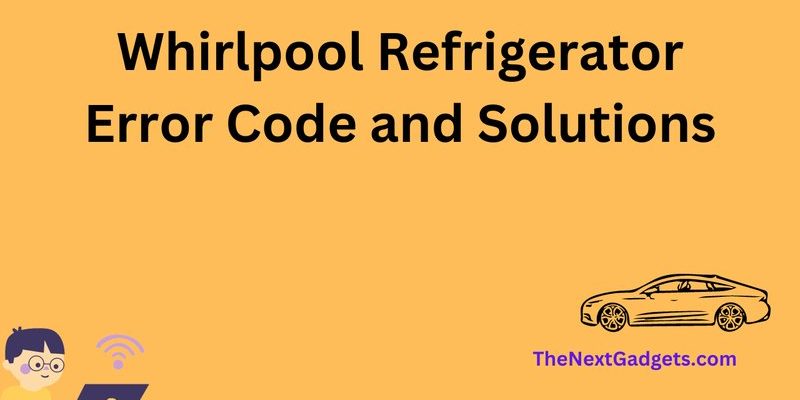
So, what exactly is this mysterious E2 error code? In simple terms, it’s your fridge’s way of telling you, “Hey, there’s something up with the sensor in here!” Most commonly, it has to do with the refrigerator’s thermistor or temperature sensor, which is a key component in managing the internal climate. When this goes awry, it can spell trouble for keeping your food cool and fresh. But don’t worry! We’re going to break down the common causes, effects, and what steps you can take to resolve and prevent this from happening.
Understanding the Role of the Thermistor in Your Refrigerator
First off, let’s get to know the thermistor a bit better. Think of it as a tiny, but mighty, weather wizard inside your refrigerator. Its primary job is to measure the temperature and send that information back to the fridge’s control board. This data helps the refrigerator decide when to kick on the cooling system or take a little break, ensuring the inside stays at that perfect chilly temperature.
You might ask, “Why’s this little guy so important?” Well, without accurate temperature readings, your fridge could either become too warm or get overly cold, leading to spoiled food or even icy build-ups. Imagine turning the dial on your air conditioning but never getting the right temperature because the control panel has a mind of its own. That’s sort of what happens when the thermistor malfunctions.
It’s important to know that this component doesn’t usually get damaged easily. However, its wires could get loose or suffer from regular wear and tear. If the thermistor isn’t reading the temperature accurately, it won’t communicate properly with the refrigerator’s control unit, potentially triggering that pesky E2 code you’re seeing.
Common Culprits of Error Code E2
Now, let’s dive into the nitty-gritty of what typically causes this error code. The most frequent offender here is a faulty or damaged thermistor. Over time, like all parts of your fridge, it can age, or its connections can become loose or corroded. This could interrupt the smooth flow of information between the thermistor and the main control board.
Another potential cause is an issue with the refrigerator’s wiring harness. Picture it like the electrical equivalent of a highway system, carrying information between different parts of the appliance. If there’s a “traffic jam” due to a disconnected or frayed wire, your fridge can’t communicate properly, leading to error messages like E2.
Here’s something else to consider: environmental factors. If your refrigerator is in a space with extreme temperatures or high humidity, it could impact its internal components, including the thermistor. Think of it like how your car might struggle in extreme weather conditions; your fridge also prefers a regular, comfortable environment to perform its best.
Steps to Address and Fix Error Code E2
So, what can you do if you see an E2 error code on your Whirlpool refrigerator? Start by taking a deep breath—don’t panic. One of the very first things you can do is try a simple reset. Unplug your refrigerator, wait a few minutes, and plug it back in. Sometimes, this might clear the error if it was a temporary glitch.
If resetting doesn’t work, it might be time to get a bit more hands-on. Checking the thermistor and its connections is the next logical step. Unfortunately, this may involve removing some panels to access the parts inside. If you’re comfortable with DIY maintenance and have the manual, follow along to inspect the wiring, looking for any signs of damage like broken wires or loose connections.
An important tip: If this sounds a little too technical for your liking, or if you’re not sure what you’re doing, consider reaching out to a professional appliance technician. They can diagnose the problem more thoroughly and safely, sparing you the hassle or potential for accidents.
Preventing Future E2 Error Codes
Prevention is always better than cure, right? To keep that E2 code from making another unwelcome appearance, regular maintenance is key. Aim to inspect and clean the back of your refrigerator at least a couple of times a year. Dust and debris can accumulate, affecting components and causing them to overheat.
Additionally, make sure the area around your fridge is cool and dry. This will help in maintaining an optimal operating environment. And remember, try not to overload your refrigerator with too much food, as this can obstruct airflow and strain its cooling systems.
By keeping an eye on these factors, you’ll not only extend the life of your thermistor and other components but reduce the risk of running into error codes down the line. With a bit of attention and care, your Whirlpool refrigerator will continue to serve fresh, crisp food for years to come.
